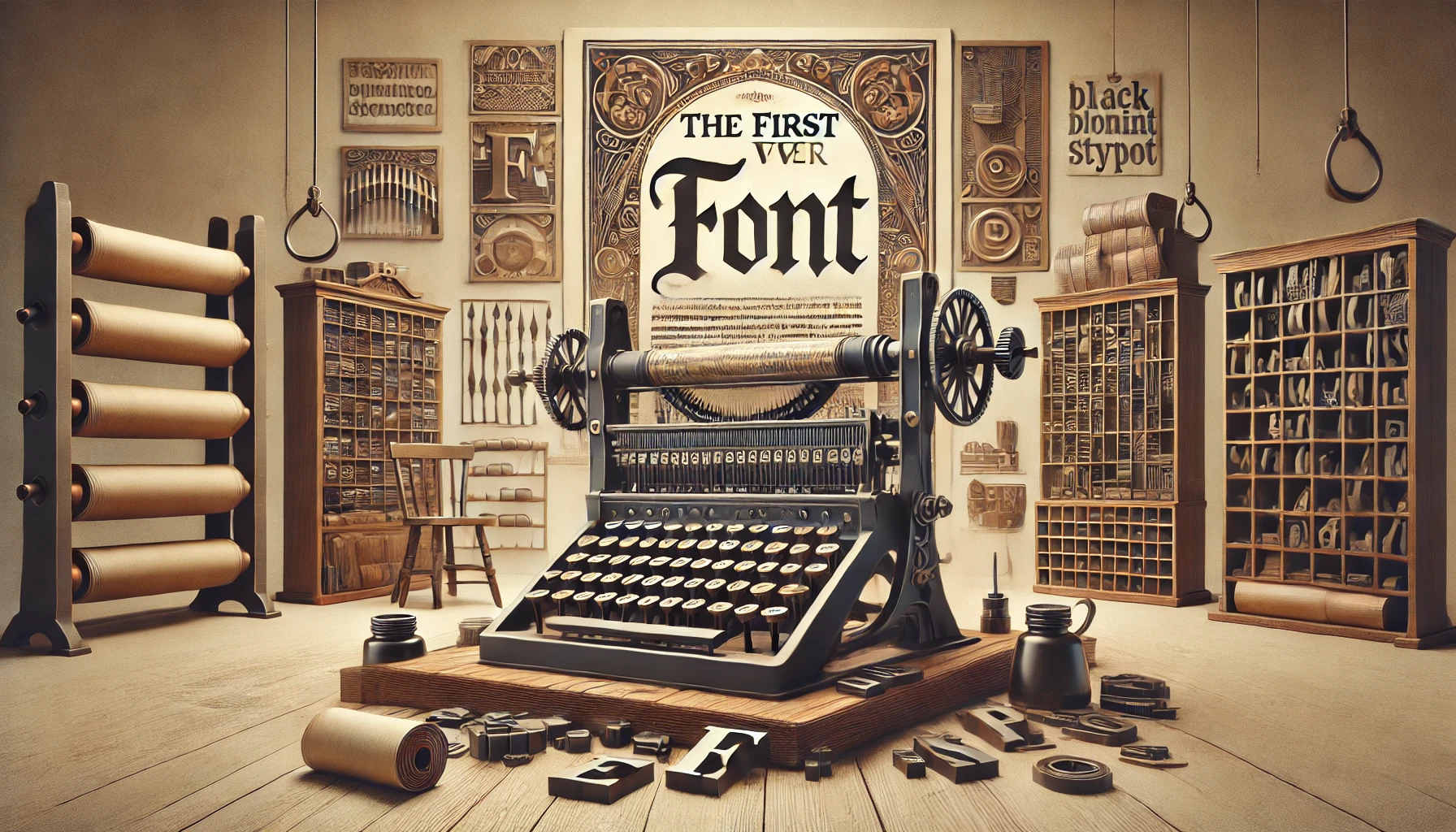Typography has always been an integral part of human communication, from ancient inscriptions to the digital text we read today. The evolution of typography is a testament to the development of writing systems and printing technologies over centuries. This article delves into the history of the first ever font, examining its origins, significance, and impact on subsequent typographic developments.
What Is a Font?
Before we explore the first font, it’s important to understand what a font is. In typography, a font is a set of printable or displayable text characters in a specific style and size. It includes letters, numbers, punctuation marks, and other symbols. Fonts are designed to convey written information efficiently and aesthetically.
The First Fonts: Blackletter and Its Predecessors
The concept of a “font” as we understand it today began with the invention of movable type. Although woodblock printing was already used in East Asia, the development of movable type by Johannes Gutenberg in the 15th century in Europe marked a significant milestone.
Gutenberg and Blackletter
Johannes Gutenberg, a German blacksmith, goldsmith, printer, and publisher, introduced the first movable type printing system in Europe around 1450. His typeface, now known as Blackletter (specifically Textura), was used to print the Gutenberg Bible, one of the earliest major books printed using this technique.
Characteristics of Blackletter
Blackletter, also known as Gothic script, is recognized for its dense, dark appearance, with broken, angular lines and sharp, pointed arches. This font was widely used throughout Western Europe from the 12th to the 17th centuries. Despite its popularity, Blackletter was eventually replaced by more readable typefaces, especially for longer texts.
The Significance of Gutenberg’s Typeface
Gutenberg’s invention did not merely introduce a new font but revolutionized the printing industry. By enabling the mass production of books, it democratized knowledge and learning in an unprecedented way.
The Spread of Movable Type Printing
Following Gutenberg’s success, movable type printing spread rapidly across Europe and later to other parts of the world. The introduction of movable type had a profound impact on literature, education, science, and religion, marking the start of the Renaissance and the Age of Enlightenment.
The Evolution of Typography Post-Gutenberg
After Blackletter, the evolution of typography saw a shift towards more humanist and later transitional and modern typefaces. These were developed to enhance readability and aesthetic appeal, reflecting broader cultural and technological changes.
The Rise of Roman and Italic Typefaces
In the 16th century, Roman typefaces began to gain popularity, characterized by their upright and clear letters that contrasted sharply with the ornate and complex Blackletter. Italic typefaces were also developed during this period, primarily used for emphasis within a text.
Conclusion: The Legacy of the First Fonts
The legacy of the first fonts, particularly Gutenberg’s Blackletter, is immense. By setting the foundations for modern printing and typography, these early fonts not only facilitated the spread of printed material but also influenced the design of typefaces that followed.
Typography continues to evolve, driven by technological advancements and changing aesthetic preferences. Yet, the story of the first font remains a pivotal chapter in the history of written communication, reminding us of the power of type in shaping human culture.
The exploration of the first ever font offers insights into the intersection of technology, art, and society, illustrating how a single invention can alter the course of history. As we continue to develop new fonts and typesetting technologies, we build on the rich legacy of the past, propelled by the same drive for innovation and expression that guided Gutenberg and his contemporaries.

Leave a Reply